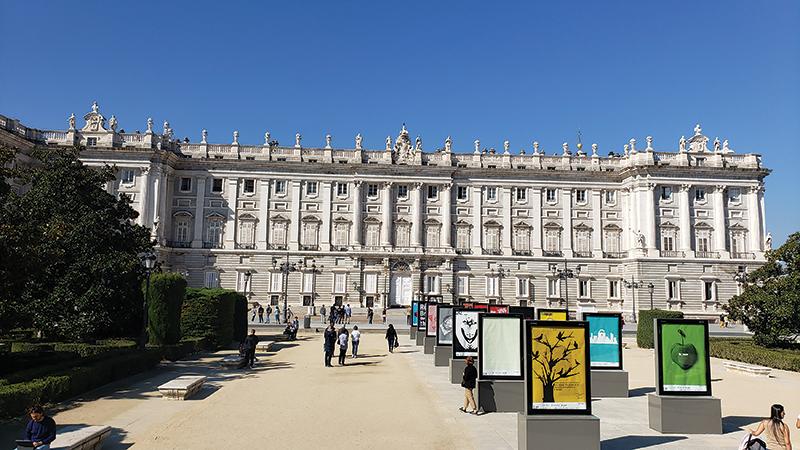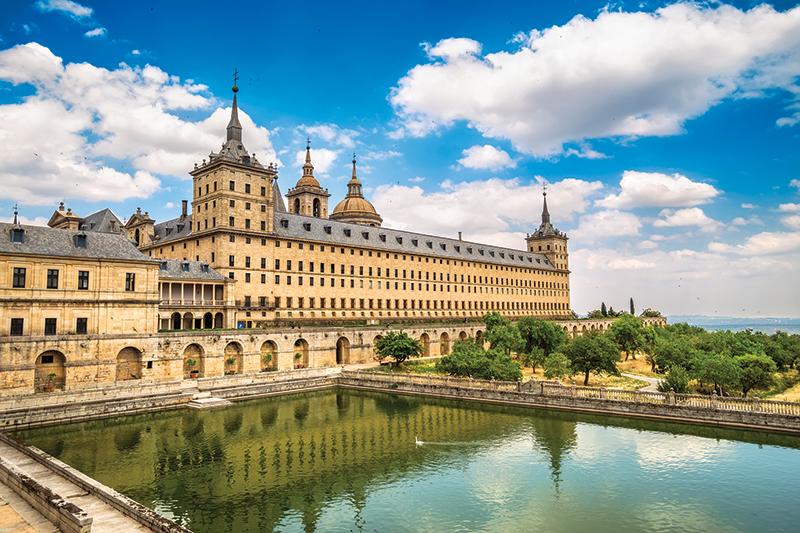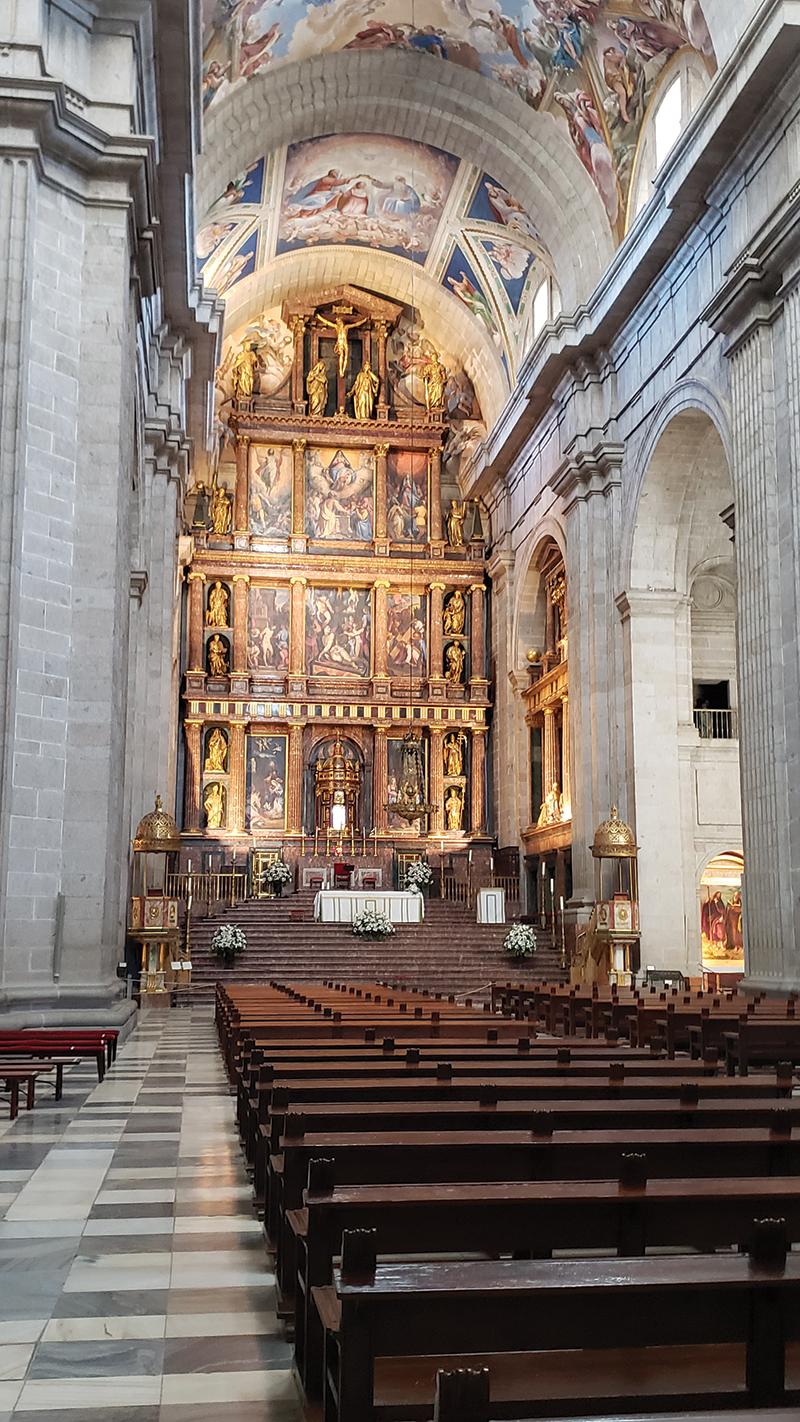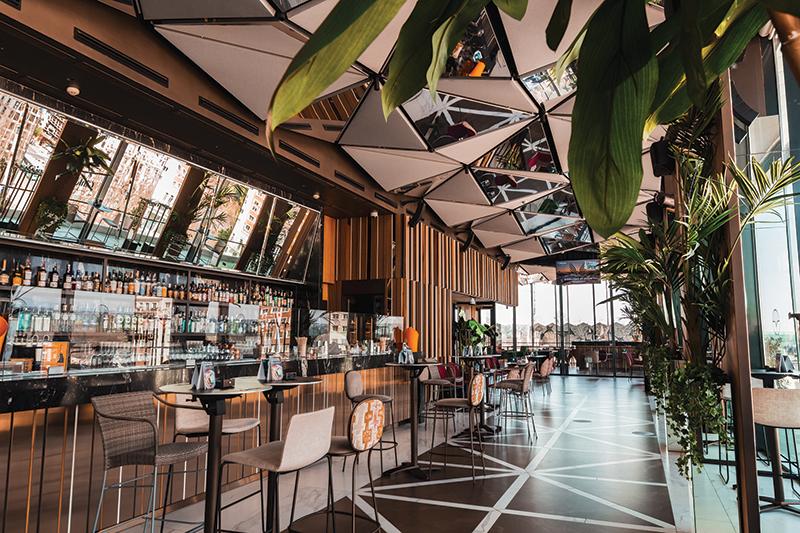Madrid has plenty for luxury travelers, from its world-class museums and historic sites to a myriad of new and renovated luxury hotels. We visited in the fall; here’s what we suggest for a trip to the Spanish capital.
Perhaps the most famous museum in Madrid is the Prado, a national landmark filled with pre-20th century art (it’s also home to one of our personal favorite pieces, “Las Meninas” by Diego Velázquez). The main draw is the huge collection by Francisco Goya but other famous artists whose works can be found here include Hieronymus Bosch, El Greco, Peter Paul Rubens and Titian. Current exhibitions include “Return Journey: Art of the Americas in Spain” (available until February 12, 2022) and “History of the Museo del Prado and its Buildings,” available indefinitely.
Tip: You can easily spend a full day exploring the halls and floors of the Prado, but we would go in the morning, then spend the afternoon at either the adjacent Real Jardín Botánico (a botanical garden with outdoor gardens, greenhouses and walking trails) or the newly minted UNESCO World Heritage Site Parque de El Retiro, which belonged to the Spanish Monarchy until the late 19th century, before becoming a public park. Here, you can stroll amongst the gardens or rent a bike for a bit of a workout or a boat to enjoy views of the park from the lake.
For those who prefer modern art, the Reina Sofía Museum is where you need to be. Artists of note here include Pablo Picasso, Salvador Dalí and Joan Miró. Two exhibits currently on are actually located separate from the main museum building; they can be found at the Velázquez Palace and Glass Palace, both located in El Retiro Park. At the former, you can find works by Argentinian-Swiss artist Vivian Suter (through May 2, 2022), while at the latter is “Kidlat Tahimik: Magellan, Marilyn, Mickey & Fr. Dámaso. 500 Years of Conquistador RockStars,” a series of wooden sculptures by Filipino artist Kidlat Tahimik.
Completing Madrid’s “Golden Triangle of Art,” is the Thyssen-Bornemisza Museum, whose collection fills the gaps left by the Prado and Reina Sofia. Works include Italian primitives and those from English, Dutch and German schools, as well as Impressionist, Expressionist and European and American paintings from the 20th century. Current exhibitions include “American Art from the Thyssen Collection,” mostly from the 19th century and divided into four thematic sections (through June 26, 2022) and “Carpaccio’s Knight: Restoration and Technical Study;” following completion of the restoration of one of the museum’s most popular paintings, “Young Knight in a Landscape” by Vittore Carpaccio, the results of the work will be presented as part of the permanent collection.
Nearby — but not part of the “Golden Triangle of Art” — is another museum worth visiting: The Lope de Vega House-Museum. It was built around 1578 and Lope de Vega (perhaps Spain’s second most famous writer, following only Miguel de Cervantes) lived here for the last 25 years of his life; in this house-museum, you can see objects belonging to the poet, as well as paintings and objects of common use from the 17th century.
Tip: The Lope de Vega House-Museum can be done in less than an afternoon; a pitstop, really. So, it’s not something to plan around but is worth a visit to learn more about the history of Madrid and literature from the 17th century and to get a taste of what life was like from this time.
Life on the Square

The Royal Palace, the official residence of the Spanish royal family, is now used only for state ceremonies.
Madrid’s most famous attraction is Plaza Mayor, which used to be the center of town when it was built in the late 16th century. Our tip would be to head there first thing in the morning to check out the architecture without the crowds (save for a few trucks making deliveries to the myriad of restaurants). If you want to see the plaza in action, head back at night — but most of the restaurants target visitors rather than locals.
Nearby is the Mercado de San Miguel, an indoor market with a huge offering focused on high-quality products and seasonal food. Stalls offering everything from Spain’s famous Jamón Ibérico to pastries, cheeses, olives, empanadas, oysters and fish. There’s even a bar or two. Shoppers have the option to grab one of the available seats to sit down and eat or they can take their victuals on the go.
Another worthwhile stop on your tour throughout Madrid’s historic city center is the Plaza de Oriente, which is located between Spain’s Royal Palace (used mostly for ceremonies nowadays), the Royal Theater and the Royal Monastery of the Incarnation. It’s free to walk around the property, so be sure to spend some time to walk among the gardens.
Whether walking around or taking car (but especially if you’re walking) be sure to take a few breaks and enjoy a hot drink, such as a café con leche, cappuccino or chocolate con churros (hot chocolate and churros), a popular choice among non-coffee drinkers. (One such stop we made was at Café Vergara, near the Royal Palace.) It’s a simple pleasure but a hot drink, a sidewalk café and a bit of people-watching is always time well spent.
Unique Dining
Did you know Madrid is home to the oldest continually operating restaurant in the world? Certified by Guinness World Records, Botín has been open since 1725 and it still serves many of the dishes today as it did when it first opened. Another fun fact: We were told the fire in the oven has never been extinguished. During the COVID-19 pandemic, employees even came in to keep the fire going despite the restaurant being closed to patrons.
The most popular dish is its cochinillo asado (roast suckling pig), which you can see being prepared in the semi-open kitchen in the back of the restaurant. (Tip: It’s definitely worth ordering.) That said, everything else on the menu we sampled was also excellent, including the croquettes, gazpacho and the cheesecake for dessert.
To avoid the crowds (because it does get crowded), make reservations for late at night. We arrived at 8:30 p.m. and nearly every table was occupied, but towards the end of the meal, we were one of the few tables still in the place. Botín, which is located just off Plaza Mayor, is open for lunch from 1 p.m. to 4 p.m. and dinner service is from 8 p.m. to midnight.
We suggest visiting Olmo, located in the Argüelles neighborhood, which is filled with tapas bars, bookstores and bakeries. It’s a bit away from the major attractions in Madrid, so we liked how it had an authentic feel. The menu is modern Spanish fare and options include à la carte or a tasting menu. The old-fashioned stewed pork cheeks entrée and the flan-like tocino de cielo served alongside bacon-flavored ice cream for dessert were big hits.
Olmo is open from 1 p.m. to 1 a.m. every day except Sunday, when it’s closed.
Should you be looking for a bite to eat closer to Madrid’s famous museums, La Huerta de Tudela is a must. It is another gastronomic restaurant serving upscale Madrid classics; all of its high-quality products come from the land along the Ebro River. Highlights here were the stew of seasonal vegetables and the bourbon vanilla French toast with yogurt.
From Sunday to Tuesday, La Huerta de Tudela is open from 1:30 p.m. to 3:30 p.m. only; from Wednesday to Saturday, it opens again for dinner service from 8:30 p.m. to 11 p.m.
Day Trips

El Escorial was built between 1563 and 1584 by order of King Philip II.
Whether it’s your first time visiting Madrid or you’re returning, a day trip outside of the city is a great option. During our trip, we visited the town of San Lorenzo de El Escorial, home to El Escorial, Spain’s former royal palace. On the grounds is a monastery, basilica, royal palace, pantheon, library, museum, university, school, hospital and necropolis.
We received a tour from a member of Patrimonio Nacional, who was able to open some doors that other visitors with a general admission ticket were unable to see. Tip: They can also arrange for tours of other royal palaces (including the one in Madrid), monasteries and more. You will have to reach out through the website, entradas.patrimonionacional.es.
If visiting El Escorial, be sure to schedule at least a half-day, if not a full day. There is plenty to explore (it’s the largest Renaissance building in the world), from the former chambers of King Philip II and the extremely ornate basilica to the eerie royal burial vaults and the outdoor gardens. The one room you shouldn’t miss, however, is the Royal Library, touted as “Spain’s Sistine Chapel.” The arched ceilings are filled with frescoes by Pellegrino Tibaldi. The library currently has over 40,000 books, all located on carved wooden shelves. One thing of note is that all of the books are facing the “wrong” way, placed onto the shelves binding-first; however, all of the pages have been painted with gold, giving them a unified appearance.
It’s important to note that there are no elevators at El Escorial, making it very inaccessible.
After all that walking, you will need a hearty lunch to refuel. Our suggestion is Charolés, whose claim to fame is for serving “The Best Cocido in the World” (cocido being a traditional stew popular in Spain but with its components served separately over the course of the meal). We sampled a smorgasbord of items from the menu, and it was all impressive. Our favorites included chorizo with potatoes and the chickpea and noodle soup, but we would also reorder any of the meats we tried.

The Basilica is the central building in the El Escorial complex.
Central Location
Our base was VP Plaza España Design, conveniently located as close to some popular attractions (like the Royal Palace) as it is to more local neighborhoods, including the Madrid Río Park (a great place to go for a walk or run and take in the scenery of the city). The hotel opened in early 2018 and has 214 rooms, as well as a signature restaurant on the first floor (the garden-inspired Botania restaurant), a rooftop bar (Ginkgo Restaurant & Sky Bar), as well as a spa, seasonal outdoor swimming pool, gym and more.
We stayed in a Premium Room on Floor 17 (the highest for guestrooms) and we were not disappointed. It was a very comfortable 377 square feet but the bathroom was a highlight. There was a separate bathtub and rain shower, but they had a window peeking into the room (electronic curtain included) that lets you take in views of the Madrid skyline, should you choose. Bath toiletries were by L’Occitane. We also liked how rooms came equipped with a Bluetooth Bang & Olufsen speaker. So, once you set that up on your phone, you can stream music with very high quality sound.
Other top accommodations include the Junior Suite – Double With Salon (the most popular), the VP Suites and the Presidential Suite, all of which are located on Floors 14 to 17. The Presidential Suite totals nearly 1,300 square feet and has its own lounge, meeting table, fitness area, walk-in closet, bedroom with an en-suite bathroom and guest water closet. Tip: The Presidential Suite offers the option of hiring a butler, who is available for anything the guests might need.

Ginkgo Restaurant serves Asian, Spanish and international cuisine, including sushi and tapas.
While we didn’t have a chance to dine at Botania, we did head to the Ginkgo Restaurant & Sky Bar on Floor 12. There are several areas that make up the restaurant, including a tapas bar, indoor restaurant and a heated terrace with views of the Royal Palace. The menu is a mix of Asian and Mediterranean dishes. Note: The ripened beef loin tartare on crispy rice was one of our favorite bites.
Luxury travel advisors should contact Sofia Barroso ([email protected]), the front desk manager, for VIP bookings and any special requests.
Related Articles
Spain to Require Travelers Receive Booster Shots
Rosewood Debuts in Spain With the Opening of Villa Magna
Marbella Club Launches Wellness Retreats for Private Groups
Guggenheim Bilbao to Host “From Fauvism to Surrealism” Exhibit